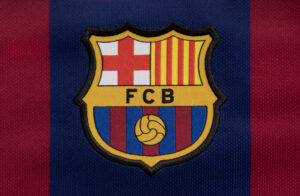The use of a Video Assistant Referee has so far been trialled in two competitive games. Although successful so far, teething problems are beginning to show.
The use of VAR started with the M23 derby between Brighton and Crystal Palace. Despite the winning goal being contentious, with many claiming the ball was bundled into the net with a hand, the referee chose not to refer the incident.
The real talking points regarding the system were found in last nights Carabao Cup semi-final first leg between Chelsea and Arsenal.
Problems With the Video Assistant Referee
The System Can Stop the Momentum of a Team
The first problem with the system is how long after an incident can the Video Assistant Referee be called to review an event in the game. Last night, Chelsea midfielder Cesc Fabregas surged into the Arsenal box only to be tackled by Danny Welbeck. The tackle was inch perfect, but only after the viewer had seen it in slow motion.
Play continued for approximately another minute before Arsenal conceded a corner. It was at this point the referee decided to review the challenge. This effectively killed Chelsea’s momentum. Arsenal were ‘on the ropes’ and couldn’t get out of their own half. The pressure was so sustained that the Blues players would have wanted to keep the tempo up.
Instead, the actual review took around 45 seconds to complete. This allowed the Arsenal players to catch their breaths and reorganise the defence. The ship was steadied and the resulting corner was defended.
Although VAR had analysed the tackle and come to the correct conclusion, the decision to let play continue for a further minute was a bad one. What if Arsenal had gone on to score? Would that goal have been cancelled out and the play brought back for a penalty? All scenarios that will need to be worked out if the system is implemented in Premier League games.
Added-on Time Debate.
In the 90th minute of the game, the fourth official held up the electronic board which told the stadium there would be an additional five minutes of play. At least 90 seconds of this would have been down to use of the Video Assistant Referee.
The time to review incidents during the game will need to be worked on. There were hardly any injuries to justify an extra five minutes of time. Antonio Conte didn’t agree. In his post-match interview, he remarked that not enough time had been added on. He suggested that games in his native Italy, which employ VAR in league games, have as much as nine added minutes.
The VAR could in fact benefit a team. Consider this scenario. Team A are playing Team B. Team A are far superior to Team B, putting them under immense pressure throughout the game. VAR is called in to review several decisions where their players are fouled by Team B players. Nine extra minutes are added to the end of the game. Team B then have one shot and score, winning the game. It hardly seems fair.
The old adage of ‘play until the final whistle’ will no doubt be banded around and to some extent, it’s true. You can’t afford to switch off for a second, or you’ll get punished. But the use of the system will give an advantage to the stronger team.
Conclusions of the System.
Without a doubt, the system has got decisions correct so far. Players will have to be more cautious in the ‘dark arts’ of the game, as they can now be reviewed. It will also hopefully lead to the end of diving or ‘simulation’ as it is now known.
However, there are issues with the system. They’ll need to be tweaked, or an official blueprint made clear as to when it can be used, by whom and how for how long. Without these constraints, it’s open to criticism from all parties involved in the sport.
Main Photo






